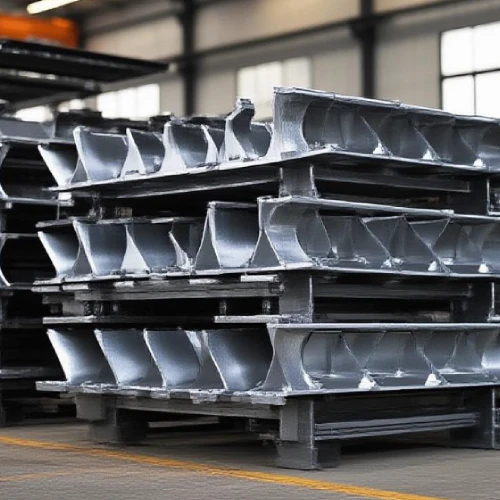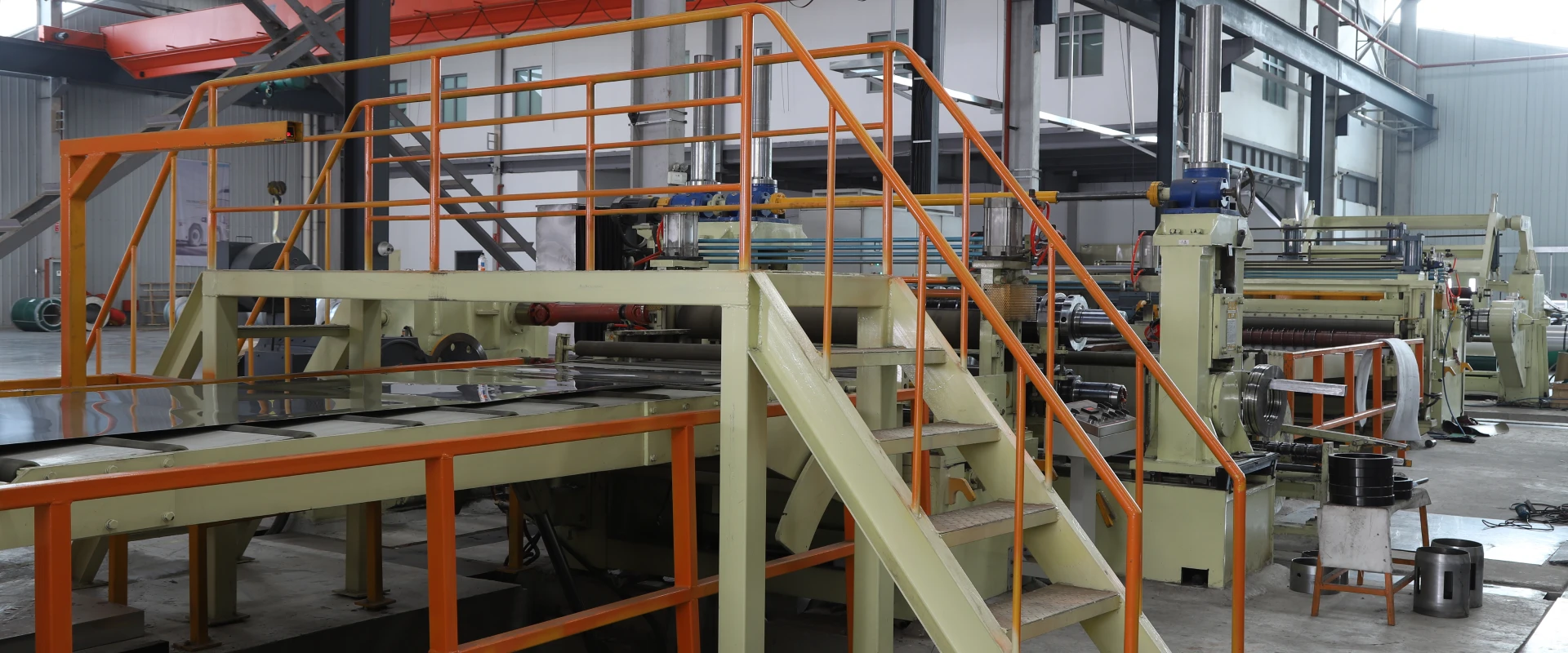High-Temperature Fatigue Life Evaluation of Ti-6Al-4V Angle Steel in Aero-Engine Bay Brackets
Aero-engine bays are some of the harshest environments in aviation. They’re cramped, exposed to extreme heat (often 300–600°C during flight), and shaken by constant vibration from the engine. The brackets that hold engine components in place—like fuel lines, sensors, and wiring—need to survive this chaos for thousands of flight hours. Ti-6Al-4V angle steel has become the go-to material for these brackets: it’s lightweight (about half the density of steel), strong, and resists corrosion. But there’s one critical question for aerospace engineers: how long does it last under high-temperature fatigue?

Fatigue failure is the silent killer of aviation parts. It happens when repeated stress (like vibration) weakens the material over time, even if the stress never reaches the material’s breaking point. Add high temperatures to the mix, and Ti-6Al-4V’s properties shift—making it more prone to cracking. For aero-engine bay brackets, a fatigue failure could mean a loose fuel line or a failed sensor, leading to catastrophic engine damage. That’s why evaluating the high-temperature fatigue life of Ti-6Al-4V angle steel isn’t just a test—it’s a safety check for every flight. We’re breaking down how this evaluation works, what affects fatigue life, and real-world results that keep planes in the sky.
Why Ti-6Al-4V Angle Steel Is Used in Aero-Engine Bay Brackets
Before diving into fatigue life, let’s understand why this material is a staple in aviation. Ti-6Al-4V is a titanium alloy with 6% aluminum and 4% vanadium—elements that boost its strength and high-temperature resistance. For aero-engine bay brackets:
Lightweight: Every gram saved in engine components improves fuel efficiency. Ti-6Al-4V’s density of 4.43 g/cm³ is far less than stainless steel’s 7.8 g/cm³, cutting bracket weight by nearly half.
High-Temperature Stability: It retains most of its strength even at 400–500°C—perfect for engine bays, where temperatures can spike during takeoff or climb.
Vibration Resistance: Unlike brittle materials (like some ceramics), Ti-6Al-4V is ductile, meaning it can flex slightly under vibration without cracking—at least, for a while.
But high temperatures change things. Above 500°C, the alloy’s microstructure starts to break down, and repeated vibration causes tiny cracks to form and grow. Evaluating fatigue life tells engineers exactly how many flight cycles (takeoff → cruise → landing) the bracket can handle before it needs replacement.
How High-Temperature Fatigue Life Is Evaluated for Ti-6Al-4V Angle Steel
Evaluating fatigue life isn’t just “break it and see”—it’s a controlled process that mimics real aviation conditions. Here’s the standard method used by aerospace manufacturers:
1. Test Sample Preparation
First, engineers create Ti-6Al-4V angle steel samples that match the actual bracket design. The samples are cut to the same thickness (usually 3–5 mm, typical for engine bay brackets) and shape, with holes and bends that mirror the bracket’s mounting points. Why? The geometry matters—holes and bends create stress concentrations, where fatigue cracks start first.
The samples are also heat-treated to match the bracket’s production process (most Ti-6Al-4V brackets are “solution-treated and aged” to boost strength). This ensures the test results reflect real-world performance, not just the raw material.
2. High-Temperature Fatigue Testing Machine Setup
The testing machine is the star of the show. It has three key parts:
Temperature Chamber: Heats the sample to aviation-relevant temperatures (300°C, 450°C, and 600°C are the most common test points—covering the range of engine bay conditions).
Load Applier: Applies repeated stress to the sample, simulating vibration. The stress is usually “cyclic” (push-pull or bending), with a frequency of 10–50 Hz (matching engine vibration rates).
Crack Detector: Uses ultrasonic sensors or optical cameras to spot tiny cracks (as small as 0.1 mm) as they form.
The goal is to find the S-N curve (Stress vs. Number of Cycles to Failure). This curve shows how many cycles the sample can handle at different stress levels—critical for engineers designing brackets that need to last 10.000+ flight cycles.
3. Test Execution and Data Collection
For each temperature (300°C, 450°C, 600°C), engineers run tests at 3–4 stress levels (e.g., 600 MPa, 700 MPa, 800 MPa—well below Ti-6Al-4V’s room-temperature tensile strength of ~900 MPa, but high enough to cause fatigue over time).
Here’s what a typical test looks like:
Heat the sample to 450°C and hold it for 30 minutes to stabilize.
Apply cyclic bending stress of 700 MPa at 20 Hz.
Check for cracks every 1.000 cycles.
Stop when a crack reaches 1 mm (the “failure” threshold for aviation parts, as larger cracks can spread rapidly).
After testing, engineers plot the S-N curve. For example, at 300°C, Ti-6Al-4V angle steel might handle 15.000 cycles at 700 MPa. At 600°C, that number could drop to 5.000 cycles—showing how temperature shortens fatigue life.
Key Factors That Affect Ti-6Al-4V’s High-Temperature Fatigue Life
Not all Ti-6Al-4V angle steel brackets have the same fatigue life. Three factors have the biggest impact:
1. Temperature (The Biggest Culprit)
As temperature rises, fatigue life plummets. At 300°C, Ti-6Al-4V’s microstructure is stable, and cracks grow slowly. Above 450°C, the alloy’s “creep” (slow deformation under stress) kicks in, making cracks grow 2–3 times faster. At 600°C, the alloy starts to oxidize, and tiny oxide particles form inside the material—these act as crack starters, cutting fatigue life by 50% or more.
Example: A test by a major aerospace company found that Ti-6Al-4V angle steel samples lasted 12.000 cycles at 300°C (700 MPa stress) but only 4.500 cycles at 600°C—less than half the life.
2. Stress Concentration (Where Cracks Start)
Engine bay brackets have holes for bolts and bends for fitting around engine parts. These areas have “stress concentrations”—places where stress builds up to 2–3 times the average stress in the bracket. A sharp hole edge, for example, can start a fatigue crack 10 times faster than a smooth surface.
To fix this, engineers “deburr” bracket holes (round the edges) and use radiused bends instead of sharp ones. A test showed that deburred Ti-6Al-4V brackets lasted 8.000 cycles at 450°C, while non-deburred ones failed after 3.500 cycles—proof that small design changes make a big difference.
3. Surface Finish (Oxidation Protection)
The surface of Ti-6Al-4V reacts with oxygen at high temperatures to form a thin oxide layer. While this layer protects the material at low temps, above 500°C it becomes brittle and flakes off, exposing fresh metal to oxidation. This “spalling” of the oxide layer creates tiny pits on the surface, which turn into fatigue cracks.
Aerospace manufacturers solve this with surface treatments like aluminum diffusion coating. This coating adds a layer of aluminum to the Ti-6Al-4V surface, which forms a stable oxide layer (alumina) that doesn’t flake off. Tests show that coated samples lasted 9.000 cycles at 550°C, while uncoated samples failed after 5.000 cycles.
Real-World Example: A Commercial Airline’s Fatigue Life Test
A major commercial airline wanted to extend the service life of their Ti-6Al-4V engine bay brackets (originally rated for 8.000 flight cycles). They worked with a testing lab to evaluate two changes: deburring all bracket holes and adding an aluminum diffusion coating.
The tests were run at 450°C (the average engine bay temperature during cruise) with a cyclic stress of 650 MPa. Here’s what they found:
Original brackets: Failed after 7.800 cycles (close to the rated 8.000).
Deburred only: Lasted 10.200 cycles (+31% life).
Deburred + coated: Lasted 14.500 cycles (+86% life).
The airline now uses the deburred + coated brackets, saving millions in replacement costs—they no longer need to swap brackets every 8.000 cycles, and there have been zero fatigue-related bracket failures in 2 years of use.
Why This Evaluation Matters for Aviation Safety
For airlines and aerospace manufacturers, fatigue life evaluation isn’t just about cost—it’s about safety. A failed bracket in an engine bay could lead to:
Fuel line leaks (risk of fire).
Sensor failure (engine control systems lose critical data).
Vibration damage to other components (ripple effect of failures).
By testing Ti-6Al-4V angle steel’s high-temperature fatigue life, engineers can set realistic “service intervals” for brackets—ensuring they’re replaced before cracks grow to dangerous sizes. This is why every new aero-engine design requires thousands of hours of fatigue testing, and why regulatory bodies like the FAA (Federal Aviation Administration) mandate these tests before a plane is certified to fly.
Conclusion
Ti-6Al-4V angle steel is a workhorse for aero-engine bay brackets, but its high-temperature fatigue life is what keeps it (and planes) safe. Evaluating this life through controlled testing—mimicking engine bay heat and vibration—tells engineers exactly how long brackets can last, and what changes (like deburring or coating) can extend that life.
As engines become more powerful (and hotter) to improve fuel efficiency, Ti-6Al-4V’s fatigue life will face even bigger challenges. But with better testing methods, smarter design tweaks, and advanced surface treatments, this alloy will keep playing a key role in aviation for decades. For anyone who flies, this evaluation work is invisible—but it’s one of the most important steps in keeping the sky safe.

